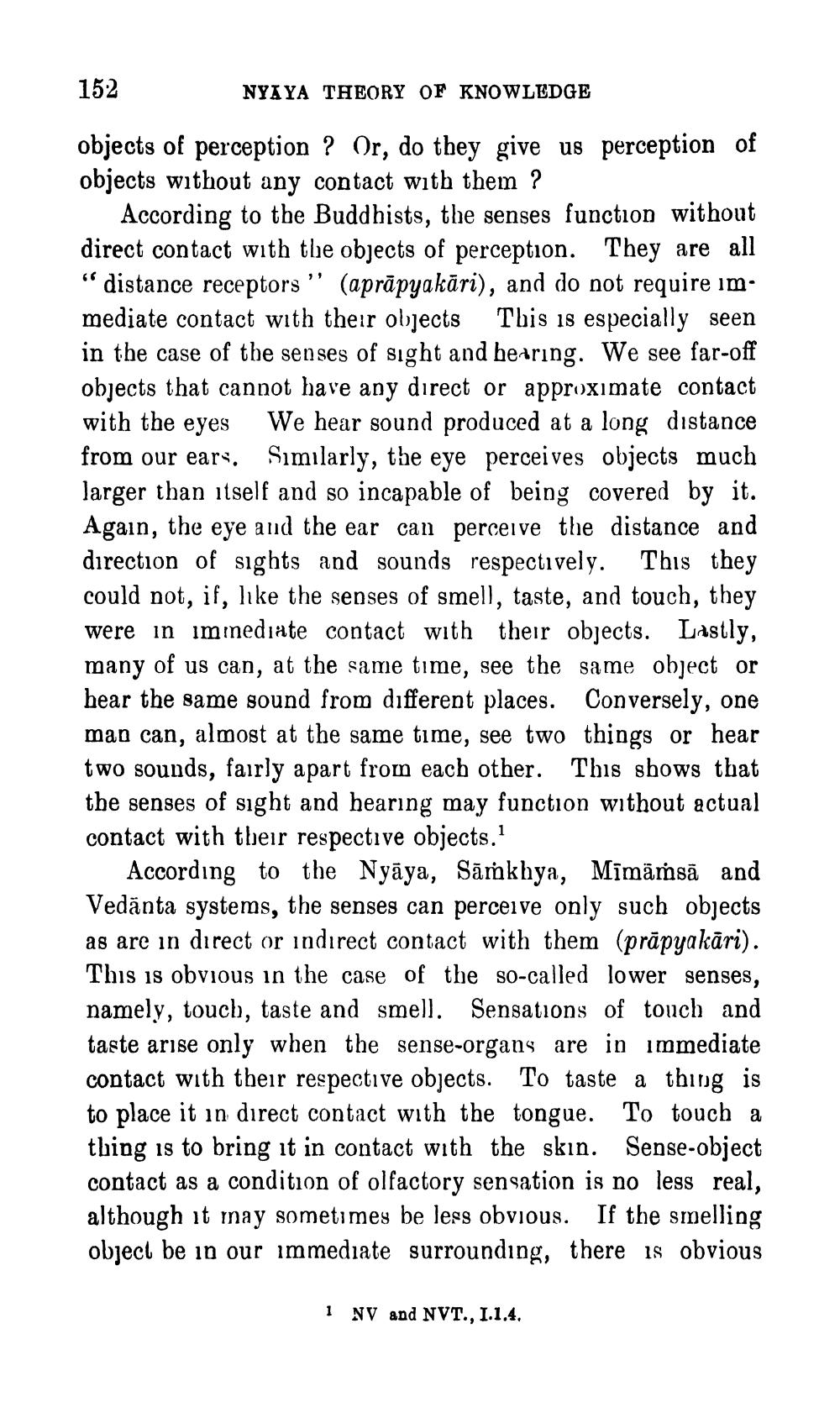________________
152
NYAYA THEORY OF KNOWLEDGE
objects of perception ? Or, do they give us perception of objects without any contact with them ?
According to the Buddhists, the senses function without direct contact with the objects of perception. They are all “distance receptors" (aprāpyakāri), and do not require im. mediate contact with their objects This is especially seen in the case of the senses of sight and bearing. We see far-off objects that cannot have any direct or approximate contact with the eyes We hear sound produced at a long distance from our ears. Similarly, the eye perceives objects much larger than itself and so incapable of being covered by it. Again, the eye and the ear can perceive the distance and direction of sights and sounds respectively. This they could not, if, like the senses of smell, taste, and touch, they were in immediate contact with their objects. Lastly, many of us can, at the same time, see the same object or hear the same sound from different places. Conversely, one man can, almost at the same time, see two things or hear two sounds, fairly apart from each other. This shows that the senses of sight and hearing may function without actual contact with their respective objects.
According to the Nyāya, Sārkhya, Mimārsā and Vedānta systems, the senses can perceive only such objects as are in direct or indirect contact with them (prāpyakāri). This is obvious in the case of the so-called lower senses, namely, touch, taste and smell. Sensations of touch and taste arise only when the sense-organs are in immediate contact with their respective objects. To taste a thing is to place it in direct contact with the tongue. To touch a thing is to bring it in contact with the skin. Sense-object contact as a condition of olfactory sensation is no less real, although it may sometimes be less obvious. If the smelling object be in our immediate surrounding, there is obvious
1 NV and NVT., 1.1.4.




